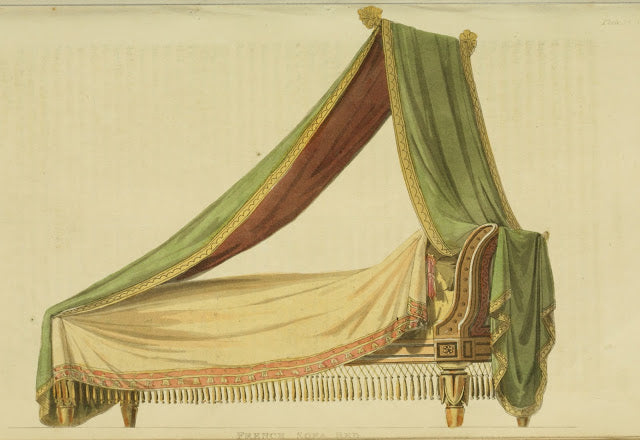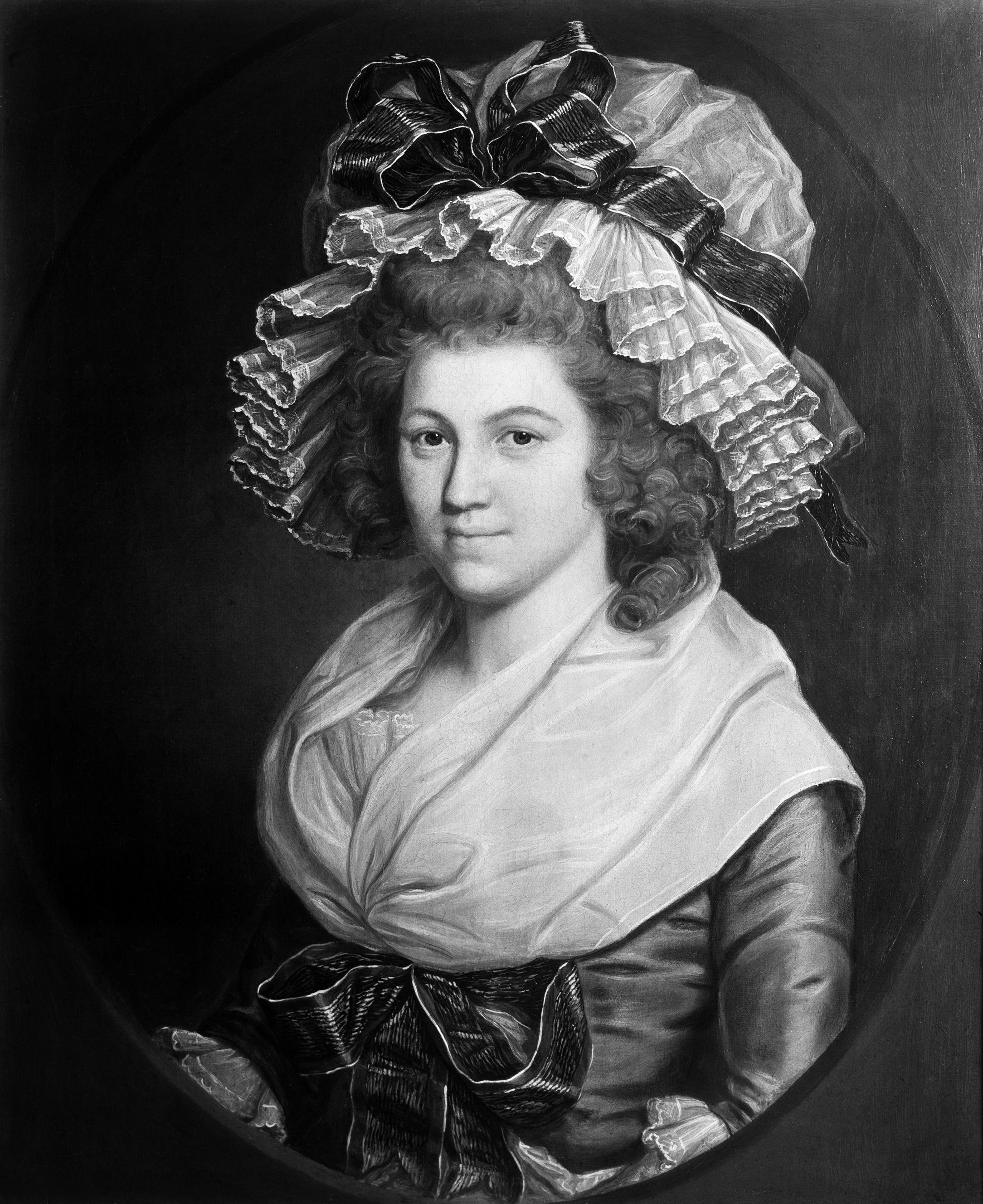Blanc-Manger: A dainty dish, fit for Kings
 Image from freeimages.com
The historical blancmange originated some time in the Middle Ages and usually consisted of capon or chicken, milk or almond milk, rice and sugar and was considered to be an ideal food for the sick. Tavuk göğsü is a sweet contemporary Turkish pudding made with shredded chicken, similar to the medieval European dish.
The true origin of the blancmange is obscure, but it is believed by some that it was a result of the Arab introduction of rice and almonds in early medieval Europe. However, there is no evidence of the existence of any similar Arab dishes from that period; though the Arabic mahallabīyah is similar, its origins are uncertain. Several other names for related or similar dishes existed in Europe, such as the 13th-century Danish hwit moos ("white mush"), and the Anglo-Norman blanc desirree ("white Syrian dish"); Dutch calijs (from Latin colare, "to strain") was known in English as cullis and in French as coulis, and was based on cooked and then strained poultry. The oldest recipe found so far is from a copy of the oldest extant Danish cookbook, written by Henrik Harpestræng, who died in 1244, which dates it to the early 13th century at the latest. The Danish work may simply be a translation of a German work which is in turn assumed to have been based on a Latin or Romance vernacular manuscript from the 12th century or even earlier.
The "whitedish" (from the original Old French term blanc mangier) was an upper-class dish common to most of Europe during the Middle Ages and early modern period. It occurs in countless variations from recipe collections from all over Europe and is mentioned in the prologue to Geoffrey Chaucer's Canterbury Tales and in an early 15th-century cookbook written by the chefs of Richard II. The basic ingredients were milk or almond milk, sugar and shredded chicken (usually capon) or fish, and often combined with rosewater, rice flour, and mixed into a bland stew. Almond milk and fish were used as substitutes for the other animal products on fast days and Lent. It was also often flavored with spices like saffron or cinnamon and the chicken could be exchanged for various types of fowl, like quail or partridge. Spices were often used in recipes of the later Middle Ages since they were considered highly prestigious. The whitedish was one of the preparations that could be found in recipe collections all over Europe and one of the few truly international dishes of medieval and early modern Europe.
On festive occasions and among the upper classes, whitedishes were often rendered more festive by various colouring agents: the reddish-golden yellow of saffron; green with various herbs; or sandalwood for russet. In 14th-century France, parti-colouring, the use of two bright contrasting colours on the same plate, was especially popular and was described by Guillaume Tirel (also known as Taillevent), one of the primary authors of the later editions of Le Viandier. The brightly coloured whitedishes were one of the most common of the early entremets, edibles that were intended to entertain and delight through a gaudy appearance, as much as through flavour.
Image from freeimages.com
The historical blancmange originated some time in the Middle Ages and usually consisted of capon or chicken, milk or almond milk, rice and sugar and was considered to be an ideal food for the sick. Tavuk göğsü is a sweet contemporary Turkish pudding made with shredded chicken, similar to the medieval European dish.
The true origin of the blancmange is obscure, but it is believed by some that it was a result of the Arab introduction of rice and almonds in early medieval Europe. However, there is no evidence of the existence of any similar Arab dishes from that period; though the Arabic mahallabīyah is similar, its origins are uncertain. Several other names for related or similar dishes existed in Europe, such as the 13th-century Danish hwit moos ("white mush"), and the Anglo-Norman blanc desirree ("white Syrian dish"); Dutch calijs (from Latin colare, "to strain") was known in English as cullis and in French as coulis, and was based on cooked and then strained poultry. The oldest recipe found so far is from a copy of the oldest extant Danish cookbook, written by Henrik Harpestræng, who died in 1244, which dates it to the early 13th century at the latest. The Danish work may simply be a translation of a German work which is in turn assumed to have been based on a Latin or Romance vernacular manuscript from the 12th century or even earlier.
The "whitedish" (from the original Old French term blanc mangier) was an upper-class dish common to most of Europe during the Middle Ages and early modern period. It occurs in countless variations from recipe collections from all over Europe and is mentioned in the prologue to Geoffrey Chaucer's Canterbury Tales and in an early 15th-century cookbook written by the chefs of Richard II. The basic ingredients were milk or almond milk, sugar and shredded chicken (usually capon) or fish, and often combined with rosewater, rice flour, and mixed into a bland stew. Almond milk and fish were used as substitutes for the other animal products on fast days and Lent. It was also often flavored with spices like saffron or cinnamon and the chicken could be exchanged for various types of fowl, like quail or partridge. Spices were often used in recipes of the later Middle Ages since they were considered highly prestigious. The whitedish was one of the preparations that could be found in recipe collections all over Europe and one of the few truly international dishes of medieval and early modern Europe.
On festive occasions and among the upper classes, whitedishes were often rendered more festive by various colouring agents: the reddish-golden yellow of saffron; green with various herbs; or sandalwood for russet. In 14th-century France, parti-colouring, the use of two bright contrasting colours on the same plate, was especially popular and was described by Guillaume Tirel (also known as Taillevent), one of the primary authors of the later editions of Le Viandier. The brightly coloured whitedishes were one of the most common of the early entremets, edibles that were intended to entertain and delight through a gaudy appearance, as much as through flavour.
 In the 17th century, the whitedish evolved into a meatless dessert pudding with cream and eggs and, later, gelatin. In the 19th century, arrowroot and cornflour were added and the dish evolved into the modern blancmange.
By the 18th century, noted chef Antonin Carême remarked:“These delicious sweets are greatly esteemed by gastronomes, but, to be enjoyed, they must be extremely smooth and very white. Given these two qualities (so rarely found together), they will always be preferred to other creams, even to transparent jellies. This is because almond is very nourishing and contains creamy, balsamic properties which are just right for sweetening the bitterness of humors."
Blancmange was considered both a delicate dish for the table as well as a wonderful food for invalids. In her 1800 book, The Complete Confectioner, Hannah Glasse offers several varieties of Blanc Mange ("a fine side dish", she later notes). Jenny Underwood of National Trust has adapted Hannah's recipe, for Jerseylovesfood.com. Hannah's recipes follow.
In the 17th century, the whitedish evolved into a meatless dessert pudding with cream and eggs and, later, gelatin. In the 19th century, arrowroot and cornflour were added and the dish evolved into the modern blancmange.
By the 18th century, noted chef Antonin Carême remarked:“These delicious sweets are greatly esteemed by gastronomes, but, to be enjoyed, they must be extremely smooth and very white. Given these two qualities (so rarely found together), they will always be preferred to other creams, even to transparent jellies. This is because almond is very nourishing and contains creamy, balsamic properties which are just right for sweetening the bitterness of humors."
Blancmange was considered both a delicate dish for the table as well as a wonderful food for invalids. In her 1800 book, The Complete Confectioner, Hannah Glasse offers several varieties of Blanc Mange ("a fine side dish", she later notes). Jenny Underwood of National Trust has adapted Hannah's recipe, for Jerseylovesfood.com. Hannah's recipes follow.
 Jenny's recipe for Hannah's Blancmange, pictured here, can be found at jerseylovesfood.com.
Jenny's recipe for Hannah's Blancmange, pictured here, can be found at jerseylovesfood.com.
To make Blanc-mange with Isinglass. Put an ounce of picked isinglass to a pint of water; put to it a bit of cinnamon, and boil it till the isinglass is melted; put to it three quarters of a pint of cream, two ounces of sweet almonds, and six bitter ones, blanched and beaten, and a bit of lemon peel; sweeten it, stir it over the fire, and let it boil; strain it, stir it till it is cool, squeeze in the juice of a lemon, and put it into what moulds you please; turn it out, garnish with currant jelly and jam, or marmalade, quinces, &C. If you choose to have your blancmange of a green colour, put in as much juice of spinach as will be necessary for that purpose, and a spoonful of brandy; but it should not then retain the name of blanc-mange, (white food,) but rerde-mange, (green food): if you would have it yellow, dissolve a little saffron in it; you should then call it jaune-mange: or you may make it red, by putting a bit of cochineal into little brandy, let it stand half an hour, and strain it through a bit of cloth; it is then entitled to the appellation of rouge-mange. Always wet the mould before you put in the blanc-mange. It may be ornamented, when turned out, by sticking about it blanched almonds sliced, or citron, according to fancy.
To make clear Blanc-mange. Take a quart of strong calf's foot jelly, skim off the fat, and strain it, beat the whites of four eggs,'put it into a jelly-bag, and run it through several times till it is clear; beat one ounce of sweet almonds, and one of bitter, to a paste, with a spoonful of rose water squeezed through a cloth; mix it with the jelly, and three spoonfuls of very good cream; set it over the fire again, and keep stirring it till it is almost boiling; pour it into a bowl, and stir very often till it is almost cold; then wet your moulds and fill them.
To make Blanc-mange with a preserved Orange. Fill your orange with blancmange; and, when cold, stick in it long slips of citron, like leaves; pour blanc-mange in the dish; when cold, set the orange in the middle; garnish with preserved or dried fruits: or you may pour blanc-mange into a mould like a Turk's cap, lay round it jelly a little broken; put a sprig of myrtle, or small preserved orange on the top.


